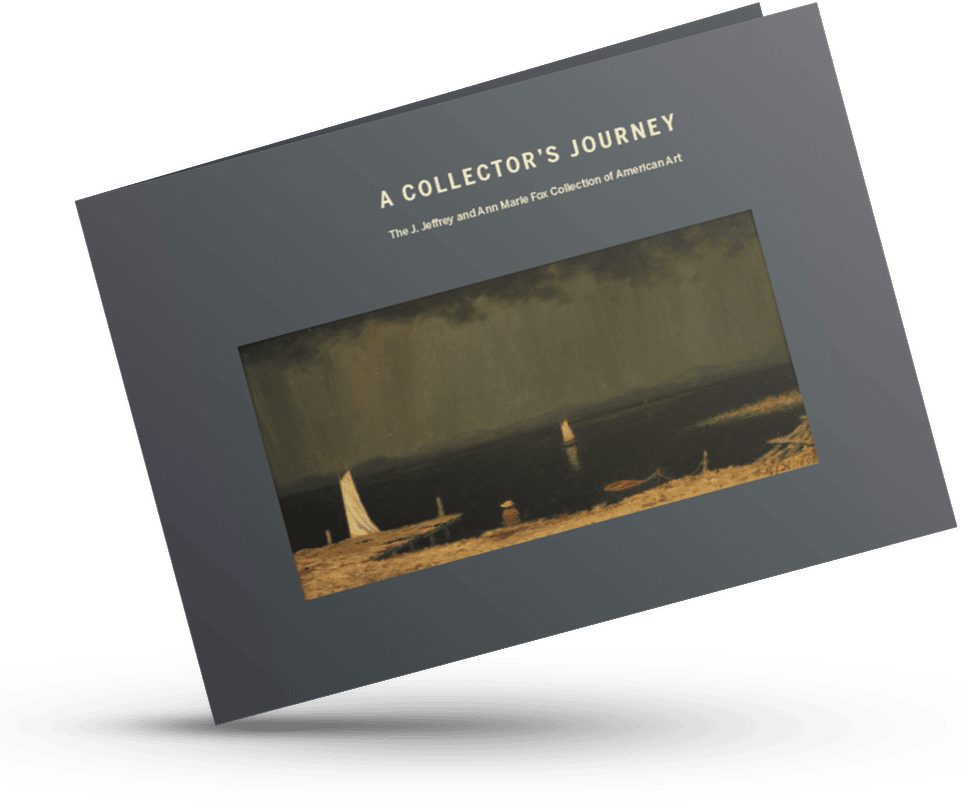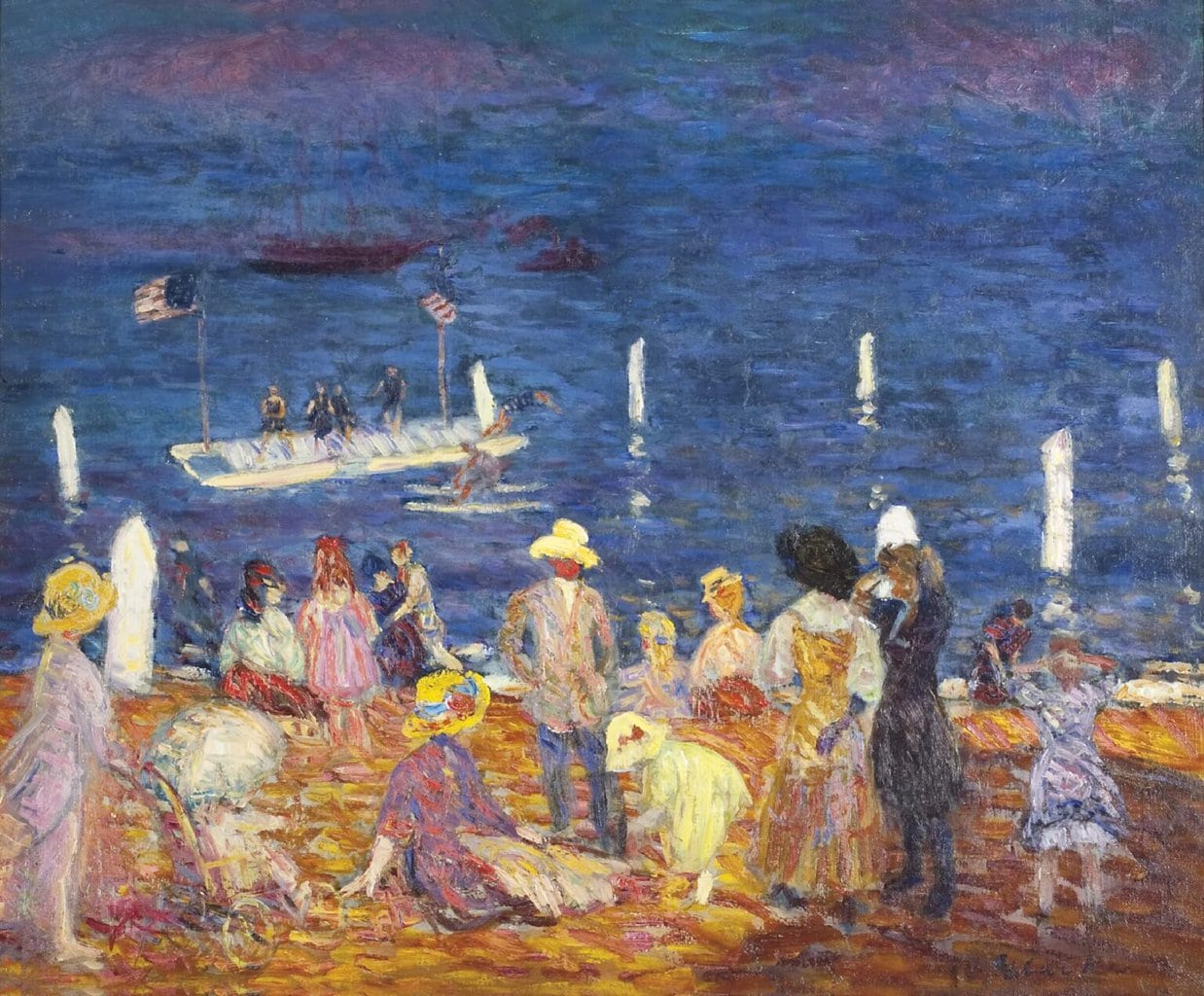William Glackens (1870–1938)
The Sea Shore, ca. 1908-9
-
Oil on canvas
-
25 ⅛ x 30 ⅛ inches
-
Signed lower right: W. Glackens
Provenance
- Estate of the artist
- Kraushaar Galleries, New York, New York
- Private collection, acquired from above, 1991
- Collection of J. Jeffrey and Ann Marie Fox
Exhibited
(Possibly) National Arts Club, New York, New York, February 3–20, 1910 (as South Beach)
William Glackens: The Formative Years, Kraushaar Galleries, New York, New York, May 8–June 8, 1991
Literature
Kraushaar Galleries, William Glackens: The Formative Years (New York: Kraushaar Galleries, 1991), 13.
Important American Paintings, Volume XVII: Enduring (New York: Questroyal Fine Art, 2016), pl. 15.
Note
William Gerdts writes in an unpublished essay, “In the first comprehensive study of Glackens art and life, the dissertation completed by Vincent John De Gregorio for [Ohio] State University in 1955, the author perceptively noted and examined what he termed a ‘Period of Transition,’ roughly between 1907 and 1910. Though the specific parameters of this period may be slightly reworked, De Gregorio correctly realized that Glackens was searching for an alternative to his earlier work, one which allied him with more progressive aesthetic options, and during these years, especially during the summer months on the shore, created a number of fascinating, avant-garde pictures which, at least for this brief period, ally him not so much with the Impressionists as with Post-Impressionism and Fauvism. ‘The Seashore’ is one of the most exciting of these achievements.”[1]
[1] William H. Gerdts (unpublished essay).
Related Work
Crowd at the Seashore, ca. 1910, oil on canvas, 25 x 30 inches; The Metropolitan Museum of Art, New York, New York

catalogue
A Collector’s Journey
The catalogue, A Collector’s Journey, is designed specifically for museum directors and curators, by focusing solely on the appearance, provenance, and exhibition history of each painting. The collections are dynamic and will continue to expand as additional exceptional and historically important paintings are acquired.
contact us
Contact Us About The Collection
The foundation is committed to broadly sharing our collection with museums. If you are a museum director or curator interested in exhibiting works from the collection, please contact us.


